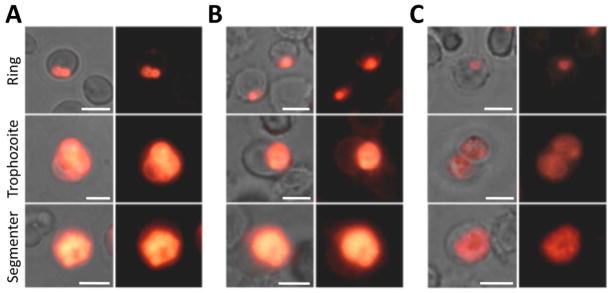Figure 3.
Trioxolane exposure induces peroxidation of parasite membrane-incorporated BODIPY 581/591 C11 radical sensor probe, similar to the trioxane ART. Cultures were treated for 2.5 h with 250 nM A) trioxolane 8, B) ART or C) the non-peroxidic artemisinin analog dDHA, prior to a 0.5 h exposure to BODIPY probe. Rows represent asexual parasite stages. Trioxolane exposure induces probe peroxidation (indicated by the yellow emission shift) in all asexual stages, similar to the ART control group, while the inactive derivative fails to induce probe peroxidation. Left columns show merged fluorescence with phase contrast view, while right columns show fluorescence only. Scale bars represent 5 μm.

